yanxu's blog
In today's society, motors play a vital role in all walks of life. In order to ensure the performance and reliability of the motor, people need to use various types of motor testers to conduct comprehensive testing and evaluation of the motor. There are many types of motor testers, which can be divided into many types according to their functions and application fields. This article will introduce several common motor testers and their classification.

First, let's introduce the motor speed tester. The motor speed tester is an instrument used to measure the motor speed and is usually used to evaluate the performance and operating status of the motor. According to their different measurement principles and usage methods, motor speed testers can be divided into two types: contact type and non-contact type. Contact motor speed testers usually measure speed through direct contact with the rotor on the motor shaft, while non-contact motor speed testers use sensors and other devices to achieve contactless measurement. Both types of motor speed testers have their own advantages, and users can choose the appropriate type according to specific needs.
Secondly, let's introduce the motor insulation tester. The motor insulation tester is an instrument used to test the insulation performance of the motor. It is mainly used to evaluate the insulation status and safety performance of the motor. According to their different testing principles and functional characteristics, motor insulation testers can be divided into various types such as DC insulation testers, AC insulation testers, and dielectric loss testers. These testing instruments can help users comprehensively understand the insulation performance of the motor, discover potential safety hazards in a timely manner, and ensure the safe operation of the motor.
In addition, we also have motor power testers. A motor power tester is an instrument used to measure the power output of a motor. It is usually used to evaluate the working efficiency and energy consumption of the motor. According to their different measurement ranges and functional characteristics, motor power testers can be divided into various types such as DC power testers, AC power testers, and power quality analyzers. These test instruments can help users accurately measure the power output of the motor, optimize the operating efficiency of the motor, and reduce energy consumption costs.
Finally, let's introduce the motor Hall effect tester. The motor Hall effect tester is an instrument used to detect the Hall effect of the motor. It is mainly used to evaluate the rotor position and speed control performance of the motor. According to their testing principles and application scope, motor Hall effect testers can be divided into multiple types such as single-channel Hall effect testers, multi-channel Hall effect testers, and Hall sensor simulators. These test instruments can help users accurately measure the Hall effect parameters of the motor, optimize the control performance of the motor, and improve the operating accuracy of the motor.
To sum up, there are many types of motor testers. According to their functions and application fields, they can be divided into motor speed testers, motor insulation testers, motor power testers, and motor Hall effect testers. These test instruments play an important role in the motor manufacturing, maintenance and operation processes, providing users with comprehensive motor testing and evaluation solutions. With the continuous advancement of technology, I believe that the types and performance of motor testers will continue to be improved, injecting new vitality into the development of the motor industry.
https://www.zymotortester.com/Learn-more-about-the-classifications-of-motor-testers.html
There are many factors that affect the price of RV air conditioners, including brand, model, function, energy efficiency, and other aspects. The price of an RV air conditioner is determined not only by its cooling and heating capabilities, but also by factors such as market demand, technological innovation, and energy efficiency. The various factors that affect the price of an RV air conditioner will be detailed below.

First of all, brand is one of the important factors affecting the price of RV air conditioners. Well-known brands usually invest more resources in product quality, after-sales service and brand premium, so their product prices are relatively high. In comparison, some niche brands of RV air conditioners may be more affordable. When consumers choose, they can make choices based on their budget and brand preference.
Secondly, the model and function will also directly affect the price of the RV air conditioner. Different models of RV air conditioners may have different cooling and heating capabilities, as well as various additional functions, such as intelligent control, air purification, etc. Generally speaking, the more functions and the stronger the performance, the higher the price will be. When purchasing, consumers need to choose suitable models and functions based on their actual needs to avoid purchasing too many unnecessary functions and increasing costs.
In addition, energy efficiency is also one of the important factors affecting the price of RV air conditioners. With the increasing awareness of energy and environmental protection, energy efficiency has become an important consideration when consumers make choices. A more energy-efficient RV air conditioner usually means lower energy consumption and lower running costs, so its price may be relatively higher. However, in the long run, choosing a more energy-efficient RV air conditioner can save consumers a lot of energy expenses. Therefore, when considering price, it is also necessary to comprehensively consider the long-term benefits brought by energy efficiency.
In addition, market demand and supply will also have an impact on RV air conditioner prices. If a certain type of RV air conditioner is in short supply due to strong market demand, its price may be relatively high. Conversely, if the supply of a certain type of RV air conditioner exceeds demand, the price may be relatively low. Therefore, consumers also need to pay attention to market conditions when purchasing and choose the right time to buy.
Finally, technological innovation will also have an impact on the price of RV air conditioners. With the continuous advancement of science and technology, the cooling and heating technology, energy-saving technology, and intelligent control technology of RV air conditioners are constantly being updated. The application of new technologies usually improves the performance and functionality of products but also increases the cost of the product, thus affecting the price. Consumers need to pay attention to the latest technology trends when purchasing, weigh the performance improvements and price costs brought by new technologies, and make wise choices.
To sum up, there are many factors that affect the price of RV air conditioners, including brand, model, function, energy efficiency, market demand, and technological innovation. When consumers purchase RV air conditioners, they need to consider various factors based on their actual needs and budget and choose the product that best suits them.
https://www.kmevehicleac.com/Analyze-the-key-factors-that-affect-the-price-of-RV-air-conditioner.html
A pellet mill is a commonly used industrial equipment used to process raw materials into granular finished products. Its structural composition is very complex, including multiple components and mechanical principles. In this article, we will delve into the structural components of the pellet mill to better understand this important device.
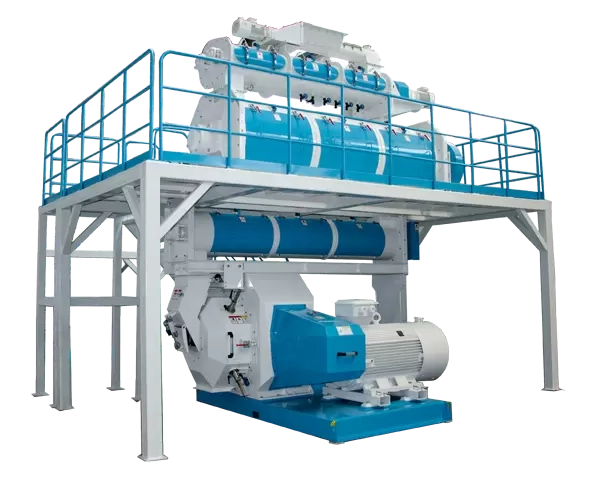
First, let's take a look at the main components of the pellet mill. Pellet mill usually consists of several parts such as feeding system, pressing system, transmission system, cooling system and control system. Each part has its own unique function and importance, and they work together to enable the pellet mill to efficiently complete the task of pellet production.
The feeding system is the first part of the pellet mill, which is responsible for transporting raw materials to the interior of the pellet mill for processing. The feeding system usually includes equipment such as feeders, conveyor belts and vibrating feeders, whose function is to uniformly transport raw materials into the pellet mill's pressing system. The key to this step is to ensure the uniformity and stability of the raw materials so that subsequent processing can proceed smoothly.
The pressing system is the core part of the pellet mill, which includes components such as molds, pressure rollers, pressure wheels and pressure regulating devices. In this part, the raw materials go through a series of extrusion and pressing processes to finally form the desired granular finished product. The mold is a key component in determining the shape and size of the pellets, while the pressure rollers and rollers are responsible for applying pressure to tightly combine the raw materials. The design and adjustment of the pressing system have a direct impact on the production efficiency and finished product quality of the pellet mill, so its structure and working principle need to be carefully designed and optimized.
The transmission system is the power source of the pellet mill, which includes motors, reducers, belt drives, bearings and other components. The function of the transmission system is to convert electrical energy into mechanical energy and transfer it to the pressing system to drive the normal operation of the pellet mill. As the core component of the transmission system, the motor's power and speed directly affect the production capacity and stability of the pellet mill. The reducer and belt drive play the role of transmitting and regulating power, ensuring the coordinated operation of the various components of the pellet mill.
The cooling system is an important auxiliary part of the pellet mill, which includes equipment such as coolers, fans and conveying devices. During the pellet mill production process, since extrusion and pressing will generate heat in the raw materials, it needs to be dissipated through a cooling system to ensure the quality and stability of the finished pellets. The cooler usually uses water circulation or air cooling to quickly take away the heat, while the fan plays the role of heat dissipation and ventilation to keep the temperature and humidity inside the pellet mill within a suitable range.
The control system is the intelligent part of the pellet mill, which includes PLC controllers, touch screen operation panels, sensors and other equipment. The function of the control system is to monitor and adjust the operating status of the pellet mill to achieve automated production and intelligent management. As the core component of the control system, the PLC controller achieves precise control and coordinated operation of each component of the pellet mill through programming and logic control. The touch screen operation panel provides operators with an intuitive interface and convenient operation methods, while the sensors are responsible for monitoring various parameters and status of the pellet mill and providing timely feedback to the control system to achieve real-time monitoring and adjustment of the pellet mill.
To sum up, the structure of the pellet mill is very complex, including the feeding system, pressing system, transmission system, cooling system and control system. Each part has its own unique function and importance, and they work together to efficiently complete the task of pellet production. By having an in-depth understanding of the structural composition of pellet mills, we can better understand its working principles and production processes, and provide more comprehensive and in-depth guidance for the use and maintenance of pellet mills.
https://www.fast-js.com/industry-news/Structural-composition-and-working-principle-of-pellet-mill.html
Drilling fluid additives are an indispensable and important component in drilling engineering. They play a vital role in the performance and stability of drilling fluids. Therefore, it is particularly important to conduct comprehensive testing and evaluation of the performance of drilling fluid additives. This article will discuss the relevant content of performance testing and evaluation of drilling fluid additive, with a view to providing certain references for research and practice in related fields.
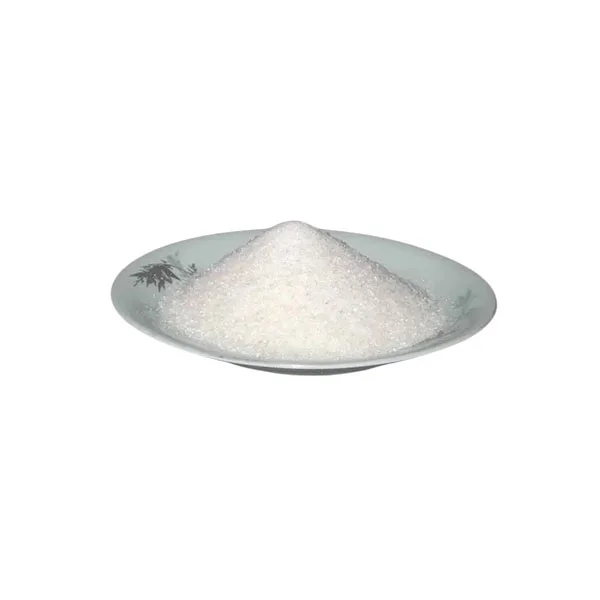
First of all, the performance test of drilling fluid additive should include multiple aspects, such as rheological properties, dispersion properties, anti-pollution properties, high-temperature resistance, etc. Among them, rheological properties are one of the important indicators for evaluating the performance of drilling fluid additives. Through rheological property testing, we can understand the impact of additives on drilling fluid viscosity, rheological index, shear stress, and other parameters, thereby evaluating their improvement in drilling fluid performance. In addition, the dispersion performance test can evaluate the dispersion effect of additives on solid particles, the anti-pollution performance test can evaluate the additive's ability to adsorb and remove pollutants, and the high-temperature resistance performance test can evaluate the stability and stability of additives in high-temperature environments. Performance.
Secondly, the performance evaluation of drilling fluid additives should be a systematic process, which requires comprehensive consideration of various test results and actual application effects. When performing performance evaluation, the actual use environment and conditions of the drilling fluid, as well as the interaction between different additives, should be fully considered. In addition, a comprehensive evaluation should be conducted based on factors such as economy and environmental protection to determine the drilling fluid additive most suitable for practical applications.
When conducting performance testing and evaluation, you also need to pay attention to the following aspects. First of all, the testing method should be scientific and reasonable, and can truly reflect the performance of additives in drilling fluids. Secondly, the testing process should be strictly controlled to ensure the accuracy and reliability of the test results. Finally, the test results should be summarized and analyzed in a timely manner to provide a reference for subsequent research and practice.
In short, the performance testing and evaluation of drilling fluid additives is a complex and important topic, which is directly related to the efficiency and safety of drilling projects. Only through comprehensive performance testing and evaluation can the most suitable drilling fluid additive for practical applications be found, thus providing strong support for the smooth progress of drilling projects. We hope that the content of this article can be helpful to research and practice in related fields, and we also look forward to more scientific research results and practical experience in the future to enrich the knowledge system in this field.
https://www.scdbwhb.com/Performance-testing-and-evaluation-of-drilling-fluid-additive.html
The tie rod cylinder is an important component in the hydraulic system and is used to convert fluid power into linear motion. They are commonly used in industrial machinery, construction equipment, and agricultural machinery. Tie rod cylinder reliability and service life are key factors in determining the overall performance and efficiency of these systems. In this article, we will discuss the factors that affect tie rod cylinder reliability and life and how to evaluate its performance.
Factors affecting the reliability and life of horizontal tie rod cylinder: Material qualityThe quality of the materials used in the manufacture of tie rod cylinders is a key factor in determining their reliability and service life. Cylinders, pistons, and rods are usually made of high-strength steel, while seals and bearings are made of rubber or other elastomers. The quality of these materials affects the cylinder's ability to withstand high pressures, resist wear, and maintain a tight seal over time.
Operating conditionsThe working conditions of the hydraulic system will also affect the reliability and service life of the tie rod cylinder. Factors such as temperature, pressure, and fluid contamination can affect cylinder performance. High temperatures can cause seals and bearings to degrade more quickly, while high pressure can cause cylinders to deform or fail. Fluid contamination can also cause damage to seals and bearings, leading to leaks and reduced performance.
Maintenance and repairProper maintenance and repair of a tie rod cylinder is critical to ensuring its reliability and longevity. Regular inspection, cleaning, and lubrication help prevent wear and extend the life of the cylinder. Repairs should be made promptly to prevent further damage and ensure the cylinder operates at peak performance.
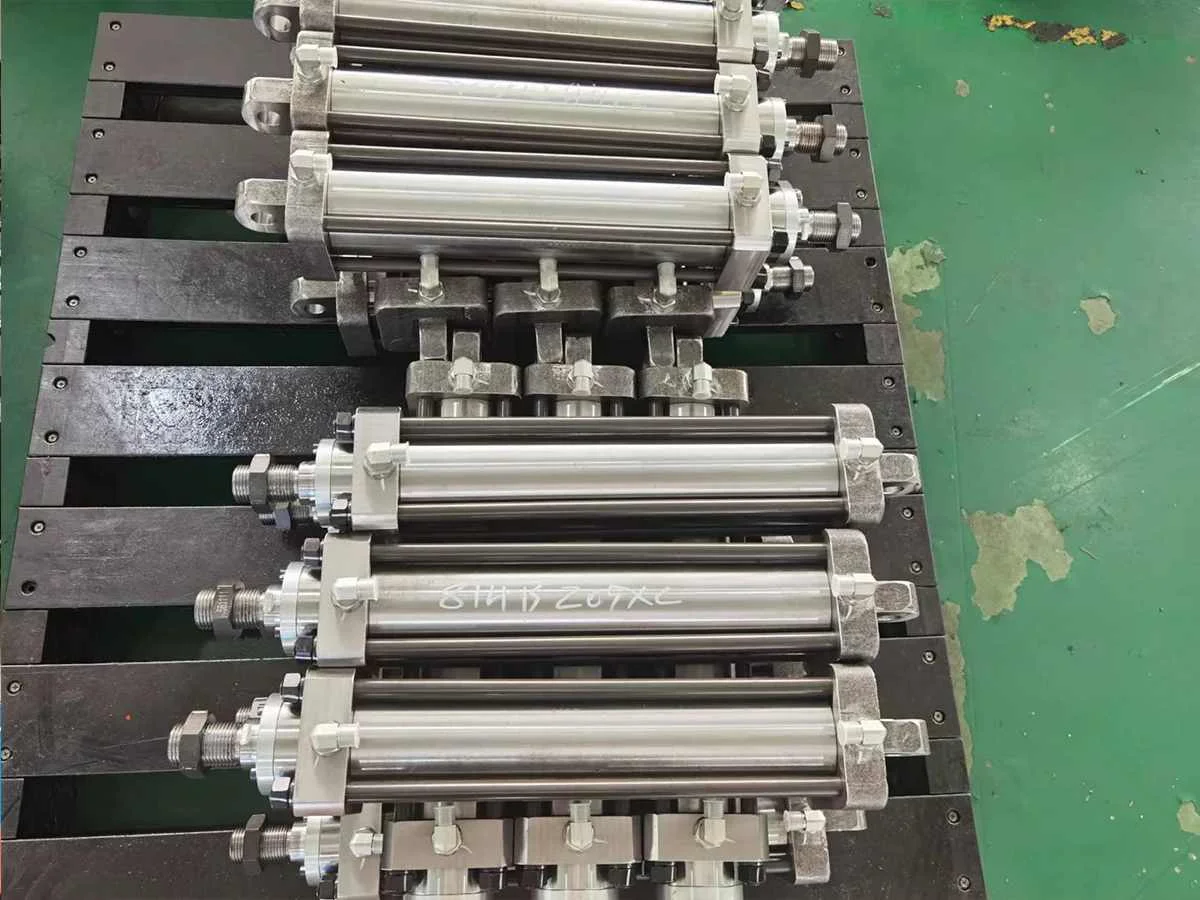
Pressure testing is a common method for evaluating tie rod cylinder performance. The cylinder is subjected to a range of pressures to determine its maximum operating pressure and identify any leaks or weaknesses in the system. This testing can help identify potential problems before they become more serious and helps ensure that the cylinder is operating safely and efficiently.
Load testLoad testing is another way to evaluate tie rod cylinder performance. The cylinder is subjected to a range of loads to determine its maximum load capacity and identify any weaknesses or deformities in the system. This test helps ensure that the cylinder can withstand the loads it will encounter in its intended application and helps prevent premature failure.
Endurance testDurability testing is a long-term test used to evaluate the reliability and longevity of tie rod cylinders. Cylinders are subjected to a range of operating conditions over an extended period of time to determine their ability to withstand wear and maintain their performance over time. This test can help identify potential problems that may develop during the cylinder's service life and help ensure that the cylinder will operate reliably throughout its expected service life.
The tie rod cylinder is an important component in hydraulic systems, and its reliability and service life are key factors in determining the overall performance and efficiency of these systems. The quality of the materials used in its construction, the operating conditions of the hydraulic system, and proper maintenance and repair all play an important role in determining its performance. Evaluating the performance of tie rod cylinders through pressure testing, load testing and durability testing helps ensure they operate safely and efficiently and helps prevent premature failure.
https://www.toringcylinder.com/reliability-and-life-evaluation-of-tie-rod-cylinder.html
Optical modules refer to equipment that uses optical technology for signal transmission and processing. It is widely used in communications, computers, medicine, and other fields. The development history of optical modules can be traced back to the discovery of the photoelectric effect at the end of the 19th century. With the continuous advancement of optical and electronic technology, optical modules are also constantly evolving and developing.

At the end of the 19th century, the discovery of the photoelectric effect laid the foundation for the development of optical modules. The photoelectric effect refers to the release of electrons when light strikes the surface of certain substances. This discovery laid the foundation for the subsequent development of optoelectronic devices and provided technical support for the development of optical modules.
At the beginning of the 20th century, the rapid development of optical and electronic technology provided strong support for the development of optical modules. Advances in optical technology have made the transmission and control of light more precise and reliable, while the development of electronic technology has provided powerful support for the control and signal processing of optical modules. During this period, optical modules began to be used in some specific fields, such as military communications and scientific research.
In the mid-20th century, with the development of laser technology, the performance of optical modules was further improved. The emergence of laser technology has greatly improved the transmission distance of light and also made it possible for high-speed transmission and high-density integration of optical modules. During this period, optical modules began to be gradually used in the communications field and became an important part of optical fiber communications.
Entering the 21st century, with the popularization and development of optical fiber communication technology, optical modules have been widely used. The performance of optical modules continues to improve, the transmission rate and transmission distance have been greatly improved, and the size and power consumption have also been further optimized. During this period, optical modules began to be used in data centers, cloud computing, and other fields, becoming an important technical means for large-scale data transmission and processing.
In recent years, with the rapid development of emerging technologies such as artificial intelligence and the Internet of Things, optical modules have also continued to evolve and innovate. The application of new materials and new processes has further improved the performance of optical modules. At the same time, optical modules have begun to be used in more fields, such as medical care, industrial control, etc. Optical modules have become an indispensable and important technology in the modern information society, and their development history also fully demonstrates the development trajectory of optical and electronic technologies integrating and promoting each other.
In general, the development history of optical modules can be said to be closely connected with the development history of optical and electronic technology. With the continuous advancement of optical and electronic technology, the performance of optical modules has been continuously improved, and the application fields have also been continuously expanded. It is believed that in the future, with the continuous advancement of science and technology, optical modules will be used in more fields and make greater contributions to the development of human society.
https://www.fineconnco.com/Explore-the-Development-History-of-Optical-Modules.html
A pressure sensor is a device that senses pressure and converts it into a readable signal. It plays a vital role in modern technology and industry. To understand the development history of pressure sensors, we need to review their origins and evolution.
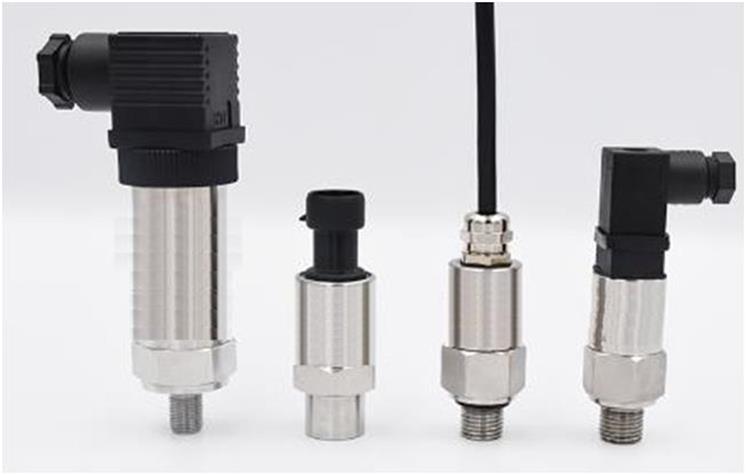
The history of pressure sensors dates back to the early 19th century when scientists began studying the properties of gases and liquids and trying to find a way to measure their pressure. During this period, the earliest pressure sensors were designed based on the spring and lever principle, measuring pressure indirectly by measuring the deformation of the spring or lever. Although simple, these early pressure sensors laid the foundation for later developments.
With the continuous advancement of science and technology, at the beginning of the 20th century, with the development of electronic technology, pressure sensors began to become electronic. During this period, the working principle of pressure sensors gradually changed from mechanical to electronic, using resistors, capacitors, inductors, and other components to measure pressure. Although the pressure sensors of this period had limited accuracy and sensitivity, they laid the technical foundation for subsequent developments.
From the 1950s to the 1970s, with the development of semiconductor technology, pressure sensors ushered in new breakthroughs. The emergence of semiconductor pressure sensors has greatly improved the accuracy and sensitivity of pressure sensors, while also greatly reducing their size and expanding their application scope. Pressure sensors during this period have been widely used in industrial automation, automobile manufacturing, aerospace, and other fields.
Entering the 21st century, as microelectromechanical systems (MEMS) technology continues to mature, miniature pressure sensors have gradually become mainstream. The application of MEMS technology has further reduced the size and cost of pressure sensors, while also making great progress in accuracy and stability. The emergence of micropressure sensors allows them to be widely used in medical equipment, smart wearable devices, and other fields.
In the future, with the continuous development of new materials, new processes, and artificial intelligence technology, pressure sensors will usher in greater room for development. For example, the application of nanomaterials will further improve the sensitivity of pressure sensors, and the application of artificial intelligence technology will also make pressure sensors more intelligent and adaptive.
In general, pressure sensors have experienced a development process from mechanical to electronic to miniaturization and intelligence. Its development is inseparable from the advancement of science and technology and the promotion of industrial needs. It also benefits from the cross-integration of materials science, electronic technology, semiconductor technology, and other fields. The development history of pressure sensors fully demonstrates mankind's unremitting pursuit of technological innovation and also shows us the development direction and potential of pressure sensors in the future.
https://www.dejintech.com/Explore-the-evolution-of-pressure-sensors.html
As an important industrial safety device, the development history of valve interlock carries the evolution of industrial safety management concepts and technological innovation. This article will deeply explore the development history of valve interlocking, from its origin and development to modern applications, showing its important role in the field of industrial safety.

The history of valve interlock can be traced back to the Industrial Revolution. With the rapid development of industrial production, the safety and reliability of industrial equipment have become the focus of attention. In the early days, the operation of industrial equipment often relied on manual operation and lacked effective safety measures. Therefore, industrial accidents occur frequently, posing serious threats to people's lives and property. In order to solve this problem, people began to explore and develop various safety devices, including the earliest valve interlock device.
With the continuous advancement of science and technology, valve interlocking devices have been gradually improved and perfected. At the beginning of the 20th century, with the development of mechanical engineering and control technology, valve interlocking devices began to adopt more sophisticated mechanical structures and control systems to ensure the correct operating sequence and safety of the valves. During this period, valve interlocking devices were mainly used in some key equipment and process pipelines, such as chemical, petroleum, natural gas, and other industries, to ensure the safe operation of equipment and the stability of the production process.
In the mid-20th century, with the rapid development of electronic technology, electronic control technology began to be applied to valve interlock. The introduction of electronic control technology makes the monitoring and management of valve interlocks more intelligent and convenient. The application of electronic components such as sensors, actuators, and controllers enables valve interlock to realize remote monitoring, data collection, and other functions, greatly improving the safety and production efficiency of industrial equipment.
Entering the 21st century, with the vigorous development of information technology, valve interlock has ushered in new development opportunities. The application of emerging technologies such as the Internet, big data, and artificial intelligence provides new possibilities for the intelligence and digitalization of valve interlock. Modern valve interlocks can not only realize real-time monitoring and data collection of equipment status but also improve the operating efficiency and safety of equipment through technical means such as data analysis and predictive maintenance.
In addition to the continuous innovation of technology, the standardization and standardization of valve interlock is also an important part of its development process. Countries and industries have continuously improved and updated the safety standards and specifications of valve interlocks to adapt to the needs and development of different industries. The formulation of these standards and specifications provides a unified basis for the design, installation, and maintenance of valve interlocks, ensuring the safe operation of industrial equipment and the safety of personnel's lives and property.
In general, valve interlock has experienced a development process from mechanization to electronics, intelligence, and digitization. Its role in the field of industrial safety has become increasingly prominent and has become an important guarantee for ensuring the safe operation of industrial equipment. With the continuous advancement of science and technology and the improvement of industrial safety awareness, it is believed that valve interlock will usher in a broader development space in the future, bringing more innovations and opportunities to industrial safety management and production operations.
https://www.nudango.com/From-machinery-to-intelligence-the-evolution-of-valve-interlock.html
The sludge dewatering machine is a piece of equipment used to treat sludge. Its structural composition directly affects its dewatering efficiency and performance. Understanding the structural components of a sludge dewatering machine is crucial to the correct use and maintenance of the equipment. This article will provide a detailed analysis of the structural components of the sludge dewatering machine so that readers can better understand this equipment.
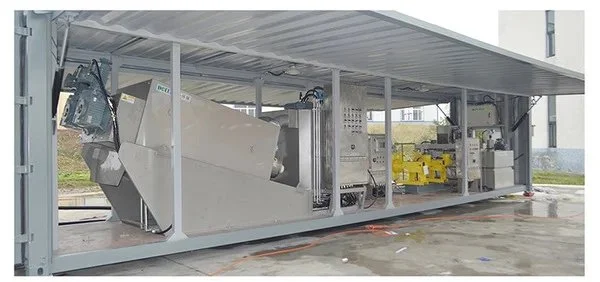
The feeding system is an important part of the sludge dewatering machine, which mainly includes the feeding port, feeding screw, feeding box, etc. The feed box is a closed container used to store sludge, and the feed screw transports the sludge from the feed box to the main part of the dehydrator.
2. Dehydration systemThe dehydration system is the core part of the sludge dewatering machine, which mainly includes the filter belt, filter belt tensioning system, filter belt cleaning system, filter belt adjustment system, etc. The filter belt is the main dewatering component of the sludge dewatering machine. Its function is to remove the water in the sludge through the filtration function of the filter belt. The filter belt tensioning system is used to adjust the tension of the filter belt to ensure its normal operation. The filter belt cleaning system is used to clean the filter belt and prevent the filter belt from clogging. The filter belt adjustment system is used to adjust the position and angle of the filter belt to ensure its normal operation.
3. Press filter systemThe filter press system is an auxiliary part of the sludge dewatering machine, which mainly includes a filter press, a filter press tensioning system, a filter press cleaning system, etc. The filter press is a component used to increase the pressure of the filter belt and improve dehydration efficiency. The filter press tensioning system is used to adjust the tension of the filter press to ensure its normal operation. The filter press cleaning system is used to clean the filter press to prevent it from clogging.
4. Discharging systemThe discharging system is the last component of the sludge dewatering machine, which mainly includes the discharging port, discharging spiral, discharging box, etc. The discharge box is a closed container used to store dehydrated sludge, and the discharge screw transports the dehydrated sludge out of the dehydrator.
5. Auxiliary equipmentIn addition to the above main components, the sludge dewatering machine may also be equipped with some auxiliary equipment, such as cleaning devices, deodorizing devices and safety protection devices. The cleaning device is used to regularly clean the inside of the equipment to keep the equipment clean and in good working condition, while the deodorizing device can reduce odor emissions during the sludge treatment process, and the safety protection device is to ensure the safety of operators.
Summarize
The structural composition of the sludge dewatering machine is directly related to the equipment's performance and dehydration efficiency. Understanding the structural composition of the sludge dewatering machine will help users better use and maintain the equipment, extend the service life of the equipment, improve sludge treatment efficiency, and reduce the impact on the environment. I hope this article is helpful to readers, thank you for reading.
https://www.mingyecn.com/In-depth-analysis-of-the-structure-and-composition-of-sludge-dewatering-machine.html
When it comes to the life of solar panels, there are many factors that affect their performance and life, which are directly related to the power generation efficiency and economy of the photovoltaic system. Therefore, understanding the factors that affect solar panel life is critical to the design, installation, and maintenance of photovoltaic systems. This article will explore various factors that affect the life of solar panels and propose corresponding solutions, hoping to provide a reference for the reliability and stability of solar photovoltaic systems.
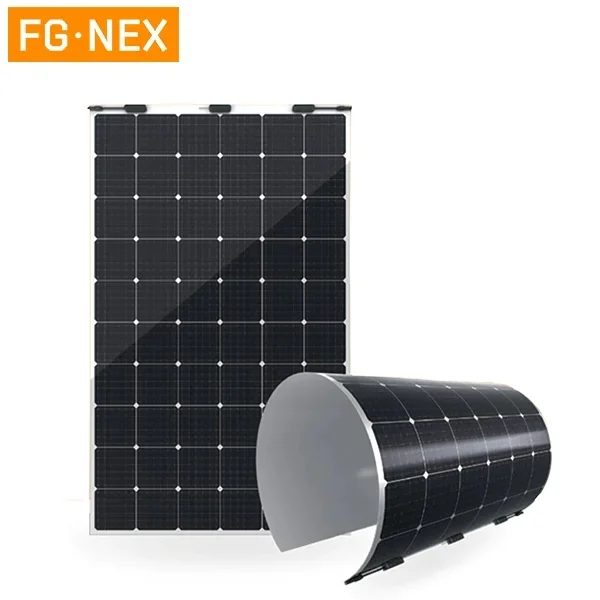
The material quality of solar panels is one of the important factors affecting their lifespan. High-quality silicon materials and other component materials can improve the stability and durability of solar panels, thereby extending their service life. Therefore, during the production and manufacturing process, selecting high-quality materials and strictly controlling the quality of materials is the key to ensuring the long-term stable operation of solar panels.
2. TemperatureSolar panels are affected by temperature during operation. Temperatures that are too high or too low can adversely affect the performance and lifespan of solar panels. High temperature will cause the power output of the battery panel to decrease, accelerate the aging of components, and reduce the service life; while too low a temperature may cause the battery panel to freeze and be damaged. Therefore, reasonable temperature control and cooling measures are crucial to extending its life.
3. Light intensityLight intensity is one of the important factors affecting the power generation efficiency and lifespan of solar panels. Too high or too low light intensity will have a negative impact on solar panels. Excessively high light intensity may cause the energy panel to overheat, affecting its performance and lifespan; while too low light intensity will reduce the power generation efficiency of the energy panel. Therefore, reasonable control of light intensity and appropriate shading and heat dissipation measures are crucial to protect solar panels and extend their life.
4. PollutionSolar panels are susceptible to various pollutants during use, such as dust, rain, bird droppings, etc. These pollutants will reduce the light absorption capacity of solar panels, affect their power generation efficiency, and even damage the surface of solar panels. Therefore, regular cleaning to keep it clean and smooth is essential to extend its life.
5. Electrical connectionThe electrical connection of a solar panel is one of the important factors that affect its lifespan. Good electrical connections can ensure the normal operation and power generation efficiency of solar panels, while poor electrical connections may cause circuit short circuits, heat generation, and damage. Therefore, proper design and installation of electrical connection systems to ensure connection reliability and safety is crucial to protect solar panels and extend their life.
6. MaintenanceRegular maintenance is essential to protect your solar panels and extend their life. Regularly checking the working status and performance parameters, and discovering and dealing with problems in time, can effectively extend the service life of solar panels.
To sum up, there are many factors that affect the life of solar panels, including material quality, temperature, light intensity, pollution, electrical connections, and maintenance. Reasonably controlling these factors and taking corresponding measures can effectively protect solar panels and extend their life, thereby improving the reliability and stability of the photovoltaic system. With the continuous development and improvement of solar energy technology, it is believed that the life of solar panels will be further improved and make greater contributions to the development of sustainable energy.
https://www.fgnexsolar.com/analysis-of-key-factors-in-solar-panel-life.html
